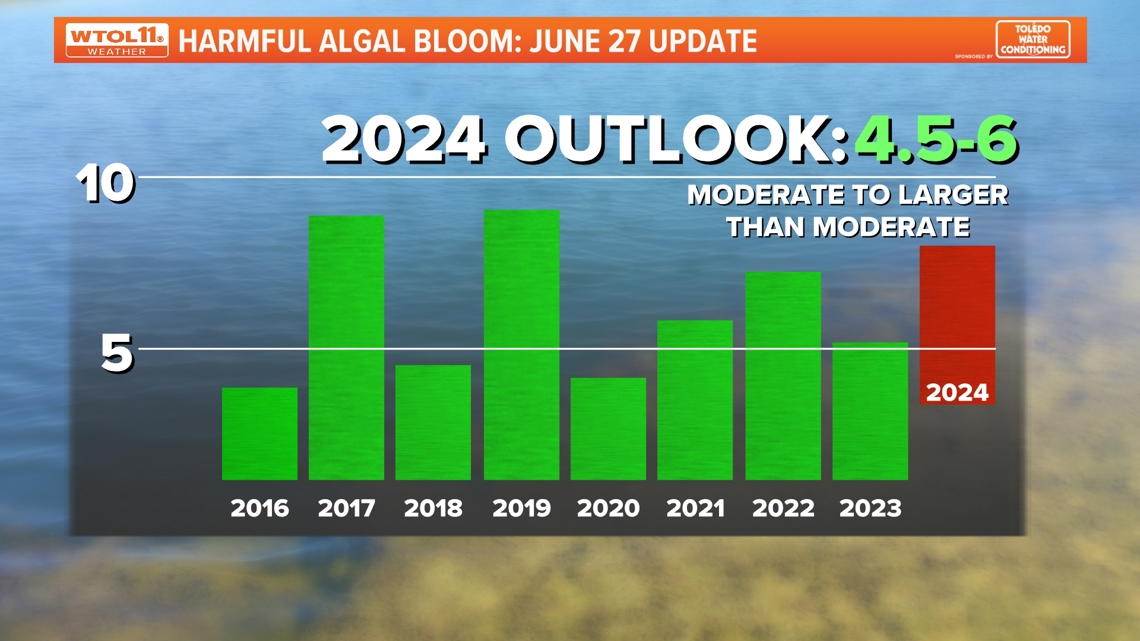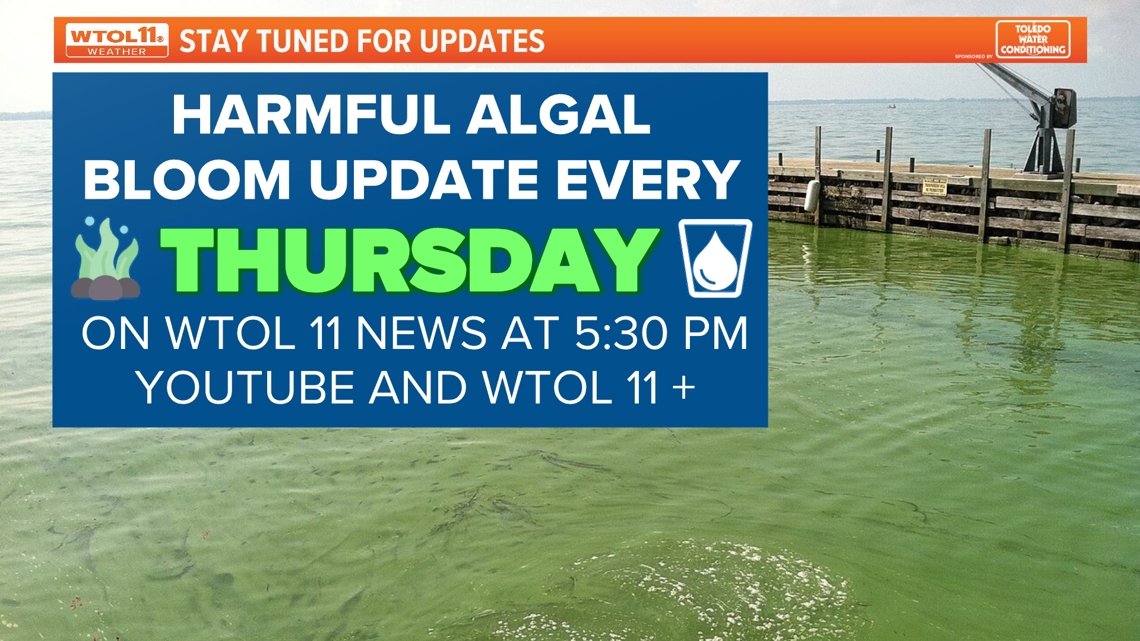TOLEDO, Ohio — The National Centers for Coastal Ocean Science (NCCOS) announced an updated, mid-season harmful algal bloom outlook during a webinar and press conference Thursday morning.
During the conferences, NCCOS said the harmful algal bloom severity is forecasted to be a 5, with a likely range of 4.5 and 6. This is slightly less severe than the initial forecast of 4.5 - 7.5. The bloom will likely be quite similar to the 2023 bloom, which was measured at a severity of 5.3, the agency said.
"Our best estimate is we don't expect a whole lot of additional new trends but there's this qualifier of what we are calling a low probability of a high-risk event," said Rick Stumpf, NOAA's National Centers for Coastal Ocean Science.
Speakers at the press conference, which was held by the Ohio Sea Grant and Stone Laboratory at Put-in-Bay, presented data regarding water quality, phosphate loads and research projects in the works to help mitigate the risk and severity of the bloom.
"But we are at a point where we need to have patience because our phosphorus has a memory and it takes a while for it to go down," said Laura Johnson, National Center for Water Quality Research, Heidelberg University.
According to data from the Heidelberg University National Center for Water Quality Research, the most recent measurement indicated there were 286 metric tons of phosphorous in the Maumee River, which is slightly above the levels recorded in 2022 and 2023. Phosphorous loads, often caused by farm runoff and exacerbated by rainfall, feed cyanobacteria, increasing the severity of the harmful algal bloom.
"A lot of momentum happening right now in Ohio in terms of making improvements on the land to clean up that storm-filled water that makes it into Lake Erie," Johnson said.


Scientists at the conference also offered insights on how weather patterns impact the harmful algal bloom. While heavy rainfall, in general, can create additional runoff and increase the severity of the bloom, a Heidelberg University scientist referenced Ohio's very mild and dry winter as a possible mitigating factor for the bloom despite a record-breaking rainy April.
The dry winter of 2023-2024 caused the soil to have a higher capacity for water later in the season. When April saw heavy rainfall, the soil was able to absorb most of it, therefore limiting what could have otherwise been a much heavier phosphorous load, experts said.
EARLIER COVERAGE: After historically soggy April, more rain is expected in early May | Climate Friday
Additionally, NCCOS said July is forecasted to be hot and mostly dry, which would also limit any increased severity of the bloom. However, NCCOS stressed in a press release and during the conference that there is a "low, but potential" risk of a heavy rainfall event in the next few weeks that could cause the bloom to become more severe, possibly as high as 7 on the scale.
During the conference, scientists showed satellite imagery of Lake Erie, which showed an already existing bloom in Sandusky Bay, in addition to algal bloom development near Monroe, Michigan. According to NCCOS, this is unusual; typically, the bloom forms first near Maumee Bay.
NCCOS and other scientists at the conference stressed that many factors play into the severity of a harmful algal bloom. This includes high water temperatures and lack of winter ice coverage, alongside other meteorological events. Even evaporation from corn and soybean crops can impact the bloom, experts said.
RELATED: The National Center for Water Quality Research focusing on outreach, education to make a difference
Scientists said they are employing new technologies to help mitigate the severity of the bloom. These include 97 projects, which Ohio Sea Grant said has positioned Ohio as a leader in understanding harmful algal blooms.
The next update to the Lake Erie harmful algal bloom forecast will be released in late July, NCCOS said in the release.
Protecting our Water
A decade ago, WTOL 11 pledged to seek answers and hold officials accountable in our ongoing fight to Protect our Water. Now, as we mark 10 years since the Toledo Water Crisis, we continue that promise we made to our community. Join us as we explore the changes that have been made, find out which promises have been fulfilled, and determine if we are truly better off now than we were in the summer of 2014.


WATCH MORE FROM WTOL 11 | PROTECTING OUR WATER

